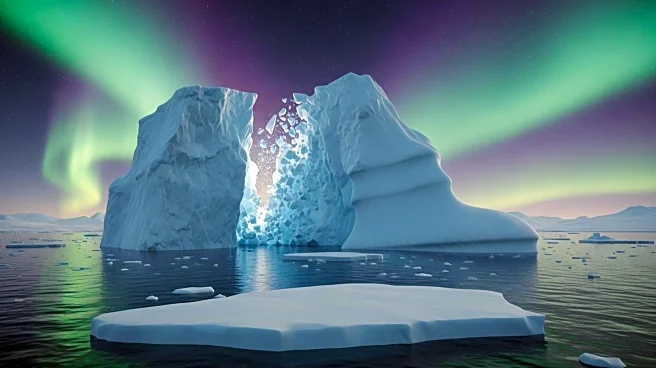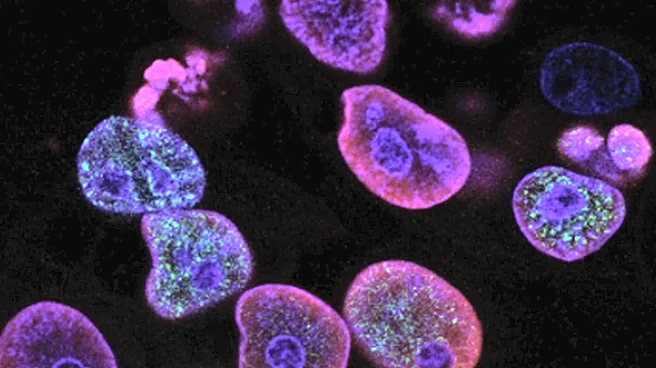What's Happening?
Researchers at the Department of Energy's Pacific Northwest National Laboratory have discovered that ice, despite forming in a perfectly hexagonal lattice, exhibits surprising flexibility and malleability. This discovery was made through the first-ever molecular-resolution observations of nanoscale ice samples frozen from liquid water, published in Nature Communications. The study revealed that ice can tolerate structural imperfections and trapped gas bubbles without compromising its crystal integrity. This flexibility is attributed to the unique nature of bonding in ice, allowing gas bubbles to form, migrate, and merge within the ice lattice. The research team used a novel technique, cryogenic liquid-cell transmission electron microscopy, to capture these observations, avoiding the harsh conditions typically required for such imaging.
Why It's Important?
This discovery has significant implications across various fields. Understanding ice's flexibility could enhance the preservation of cryogenic biological tissue samples and improve safety forecasts for aviation and vehicles. It also provides insights into glacier dynamics, as the presence of air bubbles in ice can accelerate melting. The findings could lead to advancements in materials science, particularly in understanding how ice tolerates defects compared to other solids like metals or minerals. This research opens new avenues for exploring ice crystallization and melting behaviors, potentially impacting environmental studies and climate science.
What's Next?
Future research will focus on studying the melting process and examining more complex samples, such as water with dissolved materials. The team aims to further explore the dynamics of ice at the nanoscale, which could lead to new applications in various scientific and industrial fields. Collaborations with other research institutions may continue to refine the molecular dynamics models used in this study, enhancing the understanding of ice's unique properties.
Beyond the Headlines
The study highlights the broader implications of ice's structural properties, which are crucial for life on Earth. Ice's ability to remain less dense than liquid water supports marine ecosystems and influences global climate patterns. The research also underscores the potential for machine learning and advanced imaging techniques to revolutionize the study of natural phenomena at the molecular level.










